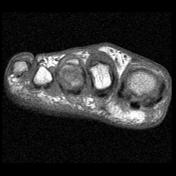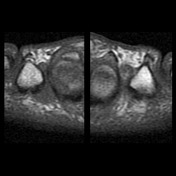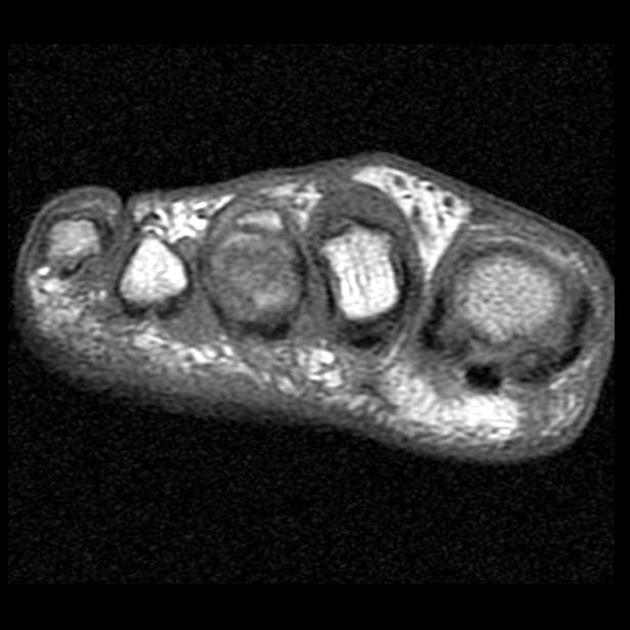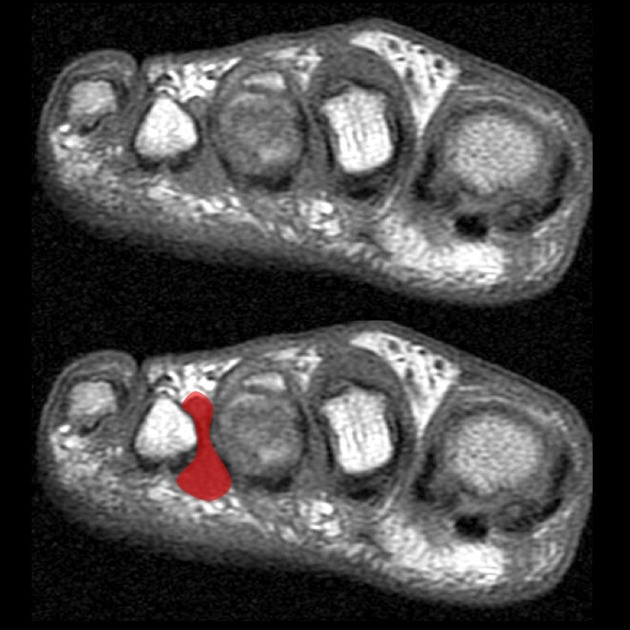Presentation
12 month history of forefoot pain.
Patient Data
Age: 50 years
Gender: Female
From the case:
Morton neuroma


Download
Info

Abnormal soft-tissue between the 3rd and 4th metatarsal heads.
Split image: Left image shows abnormal soft-tissue between the 3rd and 4th metatarsal heads. Right image shows the corresponding normal web space on the other foot.
From the case:
Morton neuroma
Download
Info

Red highlights position and shape of the Morton's neuroma.
Case Discussion
Morton's neuroma is seen as presence of abnormal soft-tissue located between the 3rd and 4th metatarsal heads (3rd web space) which is T1 isointense to muscle. The tissue bulges inferiorly and superiorly to appear "figure of eight" or dumbbell shaped.




 Unable to process the form. Check for errors and try again.
Unable to process the form. Check for errors and try again.